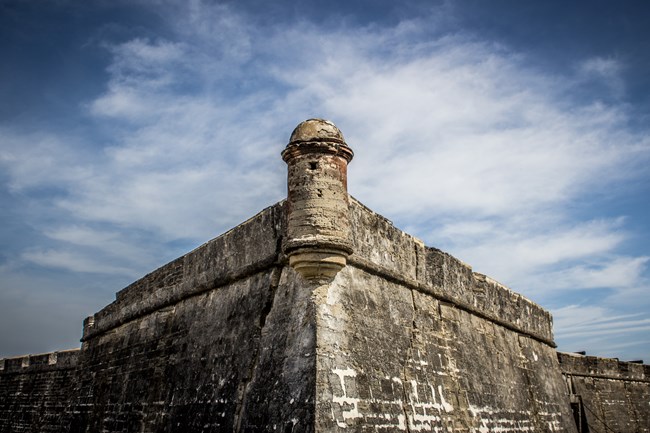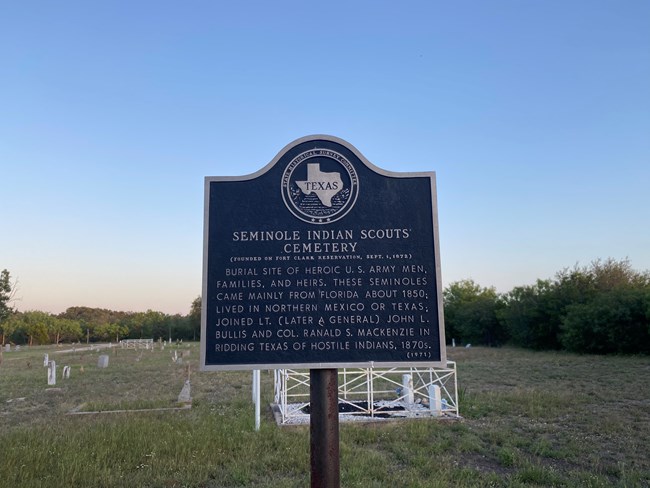It's no secret that International Underground Railroad Month (September 1 - 30) intersects with Hispanic/Latinx Heritage Month (September 15-October 15). The National Underground Railroad Network to Freedom Program views this as a unique opportunity to highlight the emerging field of study that examines little known intersection between Underground Railroad histories and Hispanic/Latinx Histories.
As this field of study continues to grow, connections between Underground Railroad and Hispanic/Latinx histories will become more clear and better known. Below, you can find some stories about this intersection that could potentially connect to your Network to Freedom site/facility/program. We encourage you to share these stories whenever possible: especially during International Underground Railroad Month and Hispanic/Latinx Heritage Month.

NPS Photo
Florida
Each European country that colonized North and South America adopted their own policies in regard to the institution of slavery. For example, in 1737 Spanish-occupied Florida, Governor Don Manuel de Montiano enforced royal edicts of 1693 and 1733 which granted freedom to enslaved people escaping from British-occupied territory to the North in exchange for membership to the Catholic church. As a result, many freedom seekers from present day South Carolina and Georgia chose to escape to Spanish Florida, where they developed thriving communities.
Network to Freedom Sites Connected to this story:
-
Fort Mose: Fort Mose is the earliest known, legally sanctioned, free black community in the present day United States. It may be the earliest known site associated with the enslaved seeking freedom by escape and living in communities where they were free. Spanish Florida became a 17th and 18th century refuge for the enslaved seeking freedom. The site of Fort Mose is a tangible remnant of early attempts by African Americans to gain their freedom. The fact that it was a community of free African Americans makes it even more significant.
-
Castillo: The Castillo, part of Castillo de San Marcos National Monument, located in St. Augustine, Florida, was a destination for freedom seekers. Africans both free and enslaved were part of this community from its founding in 1565. The first freedom seekers arrived in 1687 and worked to build the Castillo itself. Over the next 100 years, they and their descendants formed militias that were integral in defending the fort and the city from multiple British invasions. St. Augustine continued to be a haven for freedom seekers until 1790, when the King bowed to pressure from the U.S. and ended the sanctuary policies.
Resources to learn more:

Seminole Indian Scouts Cemetery Association / Windy Goodloe
Texas, Louisiana, and Mexico
As time went on, and Americans continued to migrate westward, so did the institution of slavery, and thus, freedom seeking. Because the Mexican government initially abolished slavery in 1829, and then more completely in 1837, many freedom seekers held in bondage in present day Louisiana and Texas escaped to Mexico.
Network to Freedom Sites connected to this story:
-
Los Adaes (Louisiana): The Spanish colonial mission and fort known as Los Adaes held the unique position of being a borderland site and served as both a destination and an Underground Railroad way station on an established route between French-occupied Louisiana and Spanish-occupied Texas. As a borderland community, Adaes was not self-sufficient and residents engaged in trade for food with the French at Natchitoches (Galan 2006:2). This led to an established path between the two countries (Spanish Texas - French Natchitoches) which is known today as El Camino Real de los Tejas. The long established transportation corridor, known as El Camino was the route chosen by freedom seekers escaping to Los Adaes and other parts of the Spanish interior. By the late 1700s, free people of African descent formed 15% of the population in Texas (Barr 1996:3).
-
Seminole Indian Scouts Cemetery (Texas): The cemetery site of The Seminole Negro Indian Scouts is located outside the small town of Brackettville, Texas. Black Seminoles, including freedom seekers to whom the community gave refuge, traveled on the Trail of Tears from Florida to Oklahoma and then sought freedom in Coahuila, Mexico. Subsequently, the Black Seminoles played a major role in defending the Texas borderlands between 1870 and 1914. Generations of Black Seminole families, including several freedom seekers and four Medal of Honor recipients, are buried in the cemetery and it has become a pilgrimage site for descendants.
Resources to learn more:
Puerto Rico
Puerto Rico is a destination often left out of Underground Railroad discussions. Evidence suggests that some freedom seekers escaped from enslavers in Puerto Rico, likely leaving the island, while other freedom seekers from the Caribbean fled to Puerto Rico and established free communities of their own. Although Puerto Rico is not currently represented in the Network to Freedom, the stories below could represent possible future Network to Freedom nominations.
Sites not yet nominated to the Network to Freedom connected to this story:
-
Loiza (Puerto Rico)
-
Juan de la Rosa Escape Site (Puerto Rico)
Last updated: September 1, 2021
